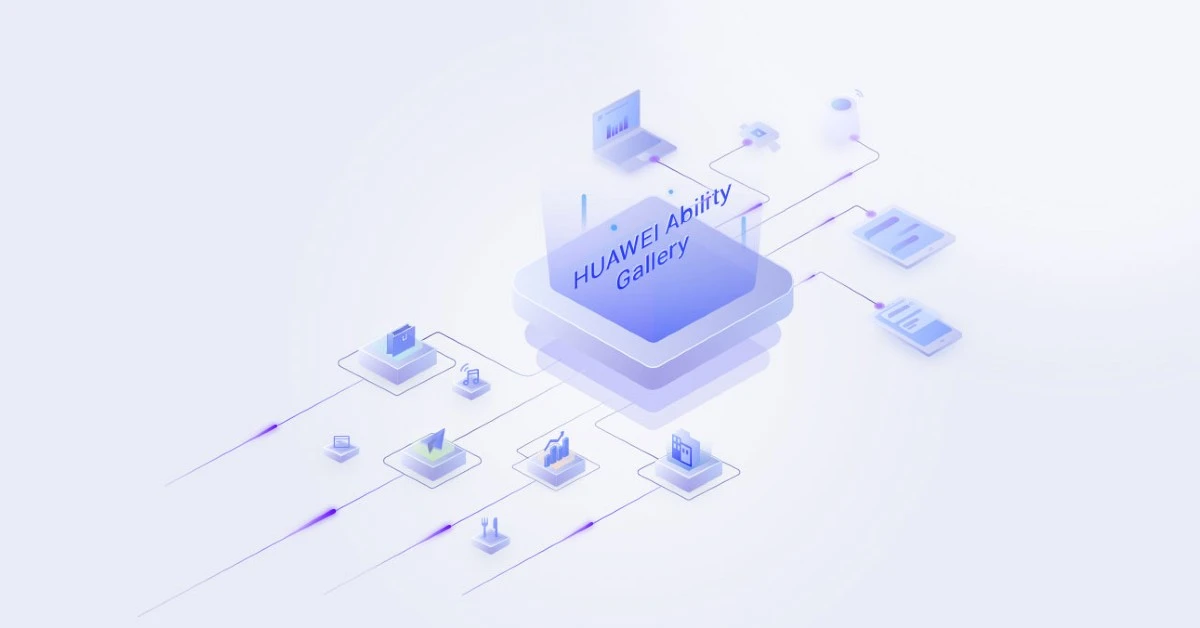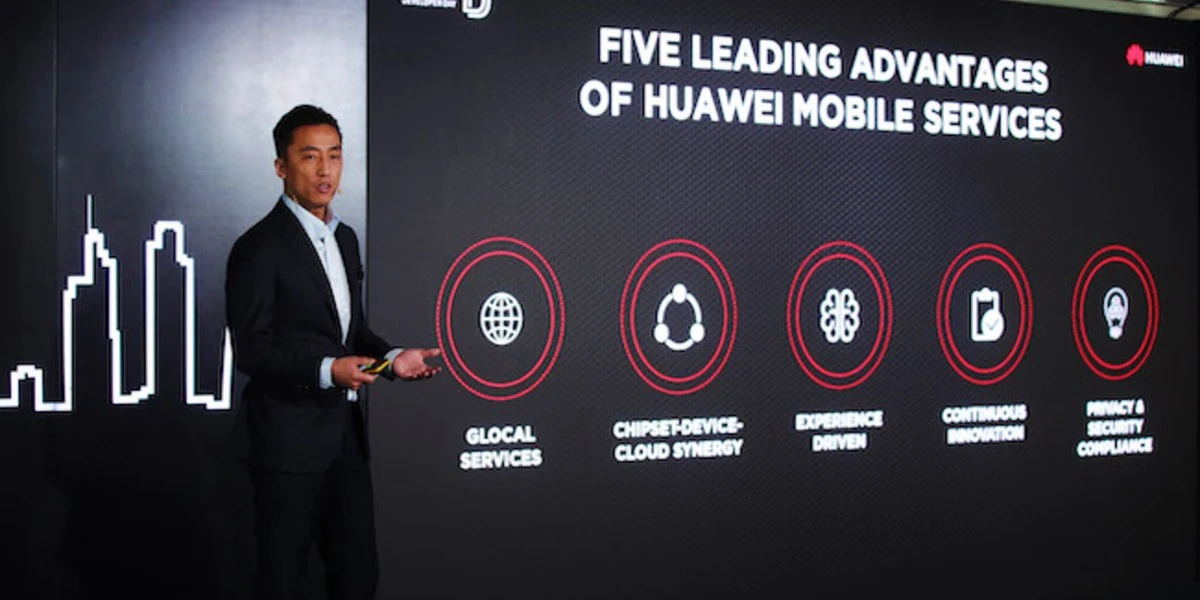Developers have the chance to claim a £20,000 financial incentive for any app uploaded to the Huawei AppGallery before 31 January 2020.
Huawei today announced a new £20 million incentive to encourage developers in the UK and Ireland to create apps and services for its mobile services unit.
The announcement was made at the Huawei Developer Day Conference hosted by the company in London. It comes as Huawei looks to make itself more self-sufficient after being hit by US sanctions that have left it unable to use Google’s Android operating system on its newer smartphones.
Huawei phones can still run Android, but the company now needs its own viable app ecosystem to replace lost Google services such as Google’s app store.
The Huawei Developer Conference was attended by some of the most prominent and influential businesses including 18 media companies, nine banks and 12 high street retailers, all learning about the possibilities offered by Huawei Mobile Services, including direct access to state-of-the-art hardware and leading AI technology.
The move has led the company to focus on bolstering its own mobile services. On Wednesday it launched open-source access kits for developers so they can more easily integrate their apps into the Huawei AppGallery, its equivalent to the Google Play Store.

The company used the London event to announce the launch of 24 Huawei Mobile Services Core Kits aimed squarely at developers.
Huawei said that over 1.3 million developers have been signed up so far and over 50,000 apps have been integrated with the HMS Core. The App Gallery also laid claim to 180 billion downloads last year.
All of these tools will allow businesses to create the next generation of apps, seamlessly integrate them into the Huawei App Gallery, and ultimately prepare for the fast-approaching, fully connected future.
Andreas Zimmer, who works in strategy team, highlighted there are currently 24 software development kits (SDK) available for developers in the ecosystem, with plans to launch more in the coming months.
Zimmer claims only one is needed to make the very simple translation from Android and into the Huawei developer ecosystem.
The majority of the SDKs are what any developer would expect, but there were a couple which Zimmer wanted to push forward for attention.
Firstly, the Machine Learning SDK. This kit allows developers to integrate new AI components into the app, such as face detection, landmark recognition, emotion detection or object detection.
Another Zimmer pushed forward was the Awareness kit. This SDK allowed the app to have greater contextual awareness, for example, understanding what time of the day it was, whether a headset is plugged in or the location of the user.
The developer kits are set-up within app categories, such as the Wallet Kit, Drive Kit and Health Kit, which ensures developers can create exceptional user experiences for specific apps.
- Scan, Awareness & ML Kits – these kits provide developers with the opportunity to give sets access to QR and other barcodes around them, provide real-time travel updates and utilise machine learning to give cutting-edge visual and language services
- Map & Location Kits – the kits provide precise user locations with the speed and accuracy of multiple methods, as well as allow user personalisation for maps and routing planning
- Push & Analytics Kit – both of these kits can help developers analyse their data, helping them to understand user behaviour and gain in-depth insight about their audience, products and content
- In-App Purchases & Account Kits – to ensure a healthy revenue growth, these kits allow developers to monetise their apps
Huawei also highlighted the fact that where Apple and Google take a revenue cut of 30%, Huawei takes only 15%.
Bringing the event to London, Andreas Zimmer, the Huawei Consumer Business Group executive covering European ecosystem and software strategy, said there had been an acceleration of its developer push to address the problem posed by the Android ban, with a significant amount of engineering resources being allocated.
“Today’s announcement concerning our Huawei Mobile Services offering, highlights our ongoing commitment and support for UK and Irish businesses and developers,”
“In recent years we have grown significantly and owe our success to the consumers and partners who have chosen and believed in us. As a sign of that support and commitment to the UK and Irish market, we have announced our £20 million investment plan to recognise and incentivise our partners; so that jointly we can build an outstanding ecosystem together.”
Anson Zhang, MD of Huawei UK’s consumer business
However, he was adamant the company had been working on the platform for a long time.
“Our cross-device identification service was launched back in 2016. Our app store was launched in 2017, so that was way before any external influences or disruption happened. We are now continuing this journey, this development.”
One interesting idea presented by Huawei is the idea of more intelligent contextualisation. The different segments in the ecosystem are linked, allowing for a recommendation engine to offer more interesting results. If a user is a big Terminator fan, for example, the video store will recommend relevant titles, but then the music store will factor in this preference and the app store will start pushing first-person shooting games up the listings. It is taking context one step further, which does sound appealing.
Another idea to improve user acquisition is to develop customisable themes and backgrounds for the user which can be linked to apps and content.
Integrated digital services within HUAWEI Ability Gallery

Huawei also presented Huawei Ability Gallery, a proprietary platform that supports developers and companies with automated services for intelligent content distribution. Huawei Ability Gallery is able to connect all devices in a single ecosystem, supporting numerous services such as smart cards, Html 5 page, or apps accessible.
The Huawei Ability Gallery is the perfect tool for developers to improve their user experience. For example, in case of travel, providing real-time information on taxi service, weather forecast at destination, smart translation of restaurant menus, boarding passes and hotel reservation.
In the 1+8+N approach, Huawei Ability Gallery connects a smartphone (1) to 8 devices (PCs, tablets, Vision, speakers, glasses, watches, Telematics and headsets) to provide an infinite number (N) of services and user experiences using AI.
Jaime Gonzalo, VP Consumer Mobile Services, highlighted there are between 4,000 and 6,000 new apps published each month. To cut through this noise, there needs to be a more intelligent approach to user engagement and acquisition.
The idea of local engagement is a big factor for Huawei. The company has said each market will have a local business development and operational team to aid the local developer community.
Gonzalo claims to be the only business which can offer this USP, demonstrating the importance of this initiative.
Huawei and AppsFlyer for users’ privacy
Also discussed was Huawei new Open Advertising ID (OAID) solution to address information security issues. As one of the functions of the HUAWEI Mobile Services Core Ads Kit, the OAID provides personalised advertisements for users while respecting their privacy and protecting their personal data.
With this solution, Huawei can work with partners to build an open and compliant smartphone ecosystem. Currently, HUAWEI has forged partnerships with industry-leading mobile marketing analytics and attribution companies, such as AppsFlyer, to jointly protect user privacy.
Huawei ecosystem in numbers
| HMS | HUAWEI APPGALLERY | HUAWEI THEMES | HUAWEI VIDEO | HUAWEI MOBILE CLOUD | HUAWEI ID |
|---|---|---|---|---|---|
| Over 1.3M registered developers | Available in more than 170 Countries | Over 70M MAU (global) | Over 140M MAU (global) | Over 160M MAU (global) | Over 100M users profiles created outside China |
| Over 600M users in 170 Countries | 400 million MAU global | Outside the Chinese market, over 280 million Themes are being downloaded each year | To be available in total 20+international markets | Number of users using Mobile Cloud to restore date increased by 506% YoY in 2018 | |
| 50.000+ Apps integrated with HMS Core | 180 billion downloads every year | paying users increased by 172% in 2018. |
Developers interested in the Huawei developer program can find out more and sign up for free here.



